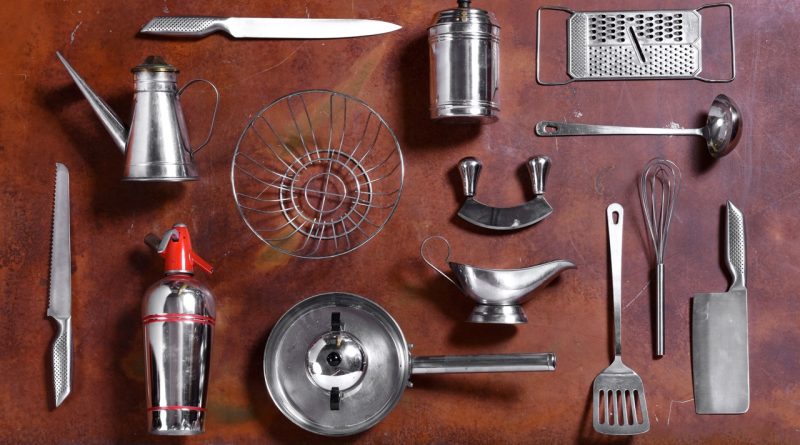The Metallurgy Behind Zwilling’s High Carbon Steel
High carbon steel knives have gained a reputation among chefs and culinary enthusiasts for their superior cutting performance and edge retention. Zwilling, a renowned name in the knife industry, has perfected the art of crafting high carbon steel knives that not only offer precision but also durability. Understanding the metallurgy behind these tools is essential for both culinary professionals and home cooks who wish to invest in quality cutlery. This article delves into the specifics of high carbon steel, the science of alloying, the heat treatment process, and maintenance tips to ensure longevity.
Understanding High Carbon Steel: A Chef’s Essential Tool
High carbon steel is distinguished by its high carbon content, typically between 0.6% and 1.4%, which significantly enhances its hardness and edge retention. This material allows for a sharper edge compared to stainless steel, making it a favored choice for professional chefs who require precision in their cuts. The ability to maintain a fine edge without frequent sharpening is crucial in busy kitchen environments where time is of the essence.
One of the notable characteristics of high carbon steel is its ability to develop a patina over time. This natural oxidation not only contributes to the knife’s aesthetic appeal but also helps to protect the blade from further corrosion. While some may find this patina an undesirable trait, many chefs embrace it as a badge of honor, showcasing the knife’s history and usage.
Furthermore, high carbon steel remains highly responsive to sharpening techniques, allowing for a fine edge that is easy to maintain. This adaptability makes high carbon knives a versatile tool in any kitchen, capable of handling a wide range of culinary tasks, from slicing delicate vegetables to carving meats.
The Science of Alloying: Elements in Zwilling’s Steel
The quality of high carbon steel can be significantly influenced by its alloying elements. Zwilling utilizes specific combinations of carbon, chromium, and molybdenum to create a balanced steel that offers both hardness and resistance to wear. The addition of chromium, typically found in stainless steel, provides a level of corrosion resistance that enhances the longevity of the blade while maintaining the desirable characteristics of high carbon steel.
Molybdenum further improves the toughness of the steel, which is essential for preventing chips or fractures during use. This careful selection of alloying elements ensures that Zwilling’s knives not only perform exceptionally well but are also resilient enough to withstand the rigors of daily kitchen tasks. The balance of these elements results in a steel that is robust yet maintains a sharp edge over extended periods.
Moreover, Zwilling’s commitment to quality is evident in their rigorous testing processes. Each batch of steel undergoes careful analysis to ensure it meets their high standards. This dedication to quality control results in knives that provide exceptional performance and reliability, making them a trusted choice for both professionals and home cooks alike.
Heat Treatment Process: Enhancing Durability and Edge
The heat treatment process is a critical step in the production of high carbon steel knives, significantly enhancing their durability and performance. Zwilling employs a meticulous heat treatment regimen that involves heating the steel to a specific temperature and then rapidly cooling it, a process known as quenching. This method transforms the microstructure of steel, increasing its hardness and making it more suitable for high-performance applications.
Following the quenching process, Zwilling utilizes tempering to relieve any stresses within the blade. Tempering involves reheating the steel to a lower temperature, which helps to achieve a balance between hardness and toughness. This crucial step ensures that the knife can withstand the impacts and stresses of daily kitchen use, preventing brittleness while maintaining sharpness.
The result of this comprehensive heat treatment process is a knife that boasts exceptional edge retention and durability. Chefs can appreciate the performance of a well-crafted Zwilling high carbon steel knife, which can endure rigorous usage while providing reliable precision in every cut.
Maintenance Tips for Long-Lasting High Carbon Knives
To ensure the longevity of high carbon steel knives, proper maintenance is essential. One of the most important practices is to hand wash the knives immediately after use. Avoiding the dishwasher is crucial, as the harsh detergents and high temperatures can lead to corrosion and dulling of the blade. Instead, use warm water and mild soap to gently clean the knife, followed by thorough drying to prevent moisture from causing rust.
Regular honing is also advisable to maintain the knife’s edge between sharpenings. A honing steel can realign the microscopic teeth of the blade, helping to keep it sharp without the need for frequent sharpening. For home cooks and professionals alike, investing in a quality honing steel can significantly extend the life of a high carbon blade.
Finally, storing high carbon knives properly is vital. Using a knife block or magnetic strip can protect the edges from nicks and damage that can occur when blades are stacked or jostled together. Additionally, applying a light coat of mineral oil to the blade can provide an extra layer of protection against corrosion while enhancing the knife’s appearance. Following these maintenance tips will ensure that Zwilling’s high carbon steel knives remain a reliable tool in the kitchen for years to come.
Understanding the metallurgy behind Zwilling’s high carbon steel knives not only highlights the craftsmanship involved but also equips culinary enthusiasts with the knowledge necessary to care for their tools. From the unique properties of high carbon steel to the intricate processes of alloying and heat treatment, each aspect contributes to a knife that is both functional and enduring. With proper maintenance, these knives can serve as essential tools in any kitchen, empowering chefs to achieve culinary excellence.
